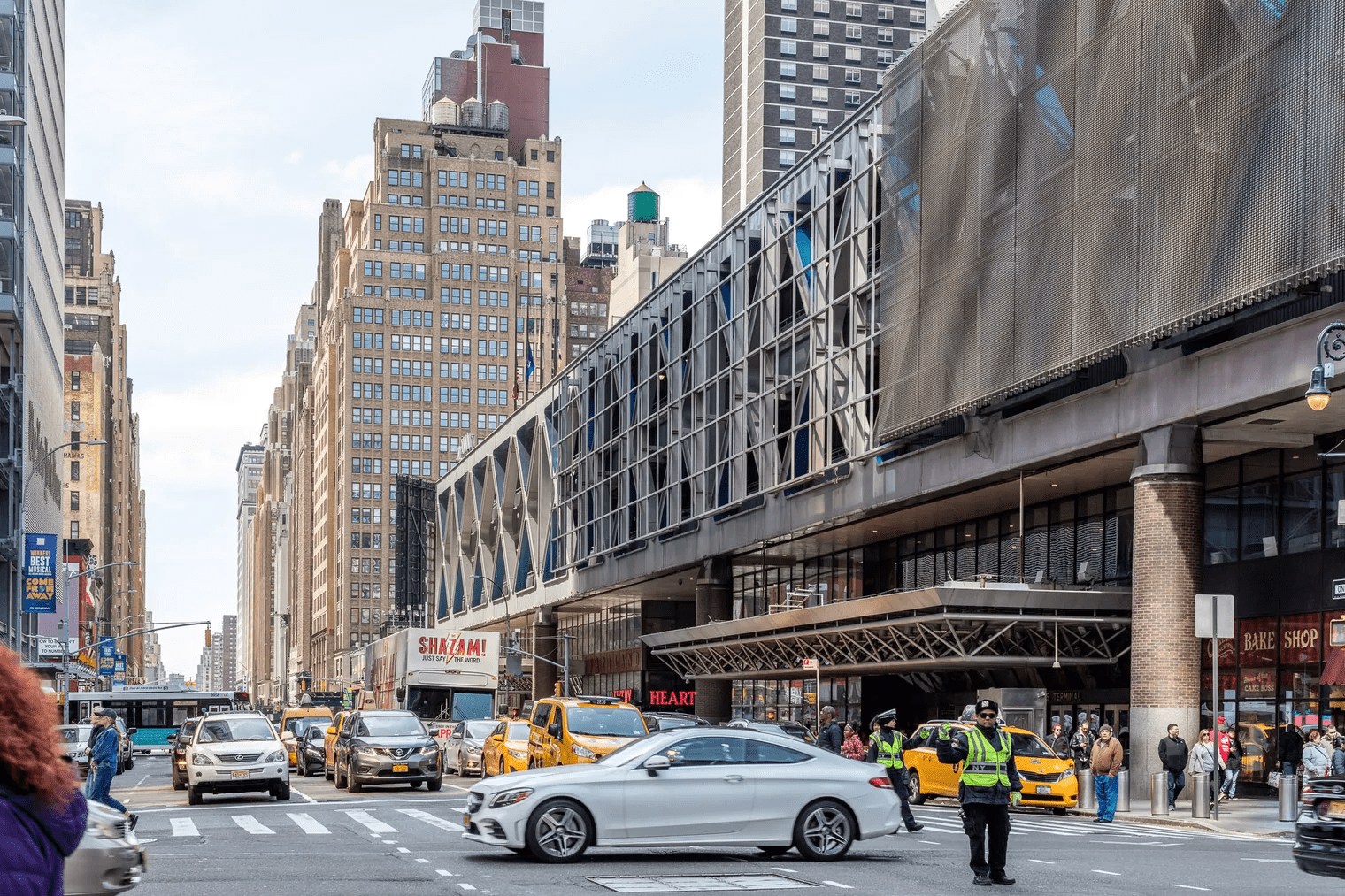The emergence of public transport was an inevitable process in the rapidly growing cities of the 19th century. Due to a huge amount of transportation on the city streets, the need for related infrastructure, namely road interchanges, parking lots, railway stations, etc, arose. That’s how the world’s largest New York Bus Terminal appeared. It serves more than 60 million people annually. Learn more at new-york-future.
The construction of the Bus Terminal

The Terminal with the world’s largest traffic was opened in New York on 8th Avenue, Manhattan, in 1950. Obviously, there were other stations on the New York territory until the 1950s, but all of them were small. Annual population growth affected daily transportation. It was practically impossible for the old bus stations to cope with the traffic. That’s why New York needed a large bus terminal with a new transportation interchange.
Before the building of the new New York Bus Terminal in 1950, there were small bus stations located in the Manhattan area. Mostly, they were considered as part of hotels. Another terminal was located near the Lincoln Tunnel. It was built in 1939 due to a ban on using busy New York City roads by buses. From then on, all buses went through the Lincoln Tunnel to reduce traffic.
But still, the bus interchange was not improved enough. Back in the 1940s, the New York government decided to build a new and innovative bus terminal in the Manhattan area. Besides, they also planned to build a tunnel that would connect it with the Lincoln Tunnel. This construction was a necessity because New York’s roads were too congested. But soon the Second World War began and all plans for that construction were put on ice. The government came back to the planning stage only in 1944. The final plan of the construction project in the Manhattan area was approved by the government in 1947. And in three years, the New York Bus Terminal served the first passenger bus routes.
Characteristics of the New York Bus Terminal
The Bus Terminal in the Manhattan area was built in the international style, better known as internationalism of the first half of the 20th century. By the early 1960s, three more parking levels were added to the Terminal, which could fit the capacity of more than one thousand vehicles.
By the mid-1960s, a new wing was added to the New York Terminal that increased its rates by 50%. The facade of the Bus Terminal was redone too. It consisted entirely of metal crossed beams. Here is an interesting fact about the Terminal: at the beginning of the 21st century, the well-known social platform Virtual Tourist recognized the New York Terminal architecture as one of the ten ugliest in the world.
In total, the New York Bus Terminal has 223 gates for boarding. There is also the gate to the subway level, as well as to lower levels intended for boarding on long-distance bus routes, including Canadian ones. At the ground-level gates, passengers board short-distance buses and suburban routes.
The Bus Terminal on 8th Avenue is the point from which hundreds of bus services depart and arrive. Absolutely all types of transportation are served here and you can get to any possible point in the USA. In the 21st century, the number of parking lots increased by 250. As of 2011, more than 2 million buses departed from the New York Bus Terminal in various directions. It is the busiest Bus Terminal in the world. There is heavy traffic every day, namely about 8,000 buses and more than 200,000 passengers.


